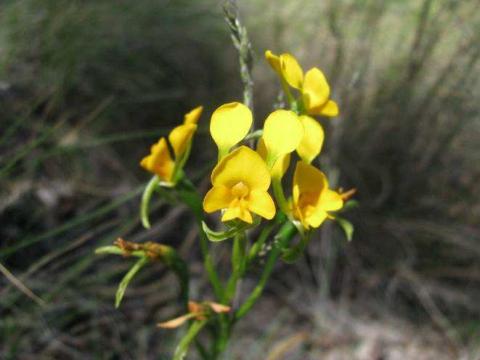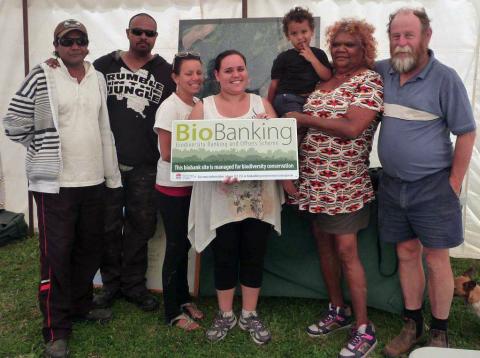Tricketts Arch Biodiversity Credits


The ISX and the Dykes family are seeking investors in 2153 biodiversity credits at a price of $6000 each. (Biobanking Agreement, No. 33) Ecodiversity credits are saleable investments and are certified through the NSW Deparment of Environment and Heritage. The Tricketts Arch biodiversity credits are detailed below. Investors that may be interested in purchasing biodiversity credits include long term financial investors seeking to make a gain on their investment, property and commercial developers seeking to offset land clearing or commercial development obligations, philanthropists and environmental supporters of native vegetation in Australia.
The ISX will do its utmost to promote the sale of the Dykes family biodiversity credits. It is, over the fifteen year life of the ISX, the most exciting financial vehicle for Aborginal landholders, with a genuine and increasing investment value, supported by the NSW State government. It also creates an option which plays to the strengths of this continents custodians over 60,000 years. Biodiversity credits and biobanking are a potentially revolutionary way for funds to flow back to remote and regional Australia and particularly to Aboriginal communities. Once the investment funds are received a twenty year long program for caring for the biodiversity of the mapped area begins with the capacity for employment and eco-tourism income.
There is of course a lot of work to be done to make bio-banking a game changer for Aboriginal Australia -but the Dykes family are the precursors for others. Currently only NSW offers biodiversity credits and the biobanking option. Those who have gained from the sale of biodiversity credits thus far have until now largely been in the greater Sydney, Newcastle and Wollongong region where developers have needed to purchase biodiversity credits for development applications and commercial developments. Aboriginal communities and property owners in regional and remote areas will also need assistance in developing their biobanking applications and certification. But the future is here and as the world swells from more and more population pressures there is more and more need for carers of native vegetation to be supported and for long term plans for the protection of conservation areas like Tricketts Arch. We urge all supporters of the ISX to carefully evaluate the Tricketts Arch biodiversity credit investment opportunity.
Genuine investors will be invited for a personal tour of the Tricketts Arch property and will be provided with a first hand view of the ecological, karst, Aboriginal and mining heritage values of the property that are to be protected by the family. For those wanting to receive a presentation by the family, this can also be arranged. Please download the 94 page Tricketts Arch Prospectus at this link.
Tricketts Arch is located approx. 50 km southeast of Oberon by driving along the Shooter Hill Road; Mount Werong Road and Jaunter Road. The property is in the south-eastern corner of the Oberon – Gurnang Plateau surrounded by farmlands, pine plantations and National Park. To the east are the Kanangra Boyd National Park, Wildness Area and Greater Blue Mountains World Heritage Area. South and west are cleared farming lands, to the north is private property with native vegetation and NSW State Forest pine plantations. The property fronts the Tuglow River and has three creeks traversing it: Slys Creek, Chimney Creek and Arch Creek.
Tenure Details:
Tricketts Arch property is owned by Peter and Sharon Ruby Dykes Lot 15 DP 661990 Lot 1 DP 1152451
Ecosystem Credits Available:
|
Biometric Vegetation Type (DECC 2008) |
OEH Biometric No. |
Vegetation Type Vegetation Western Blue Mountains – (DEC 2006) |
Area (ha) |
Ecosystem Credits |
|
Eurabbie - stringybark shrubby woodland on limestone in the Jenolan Caves area, Sydney Basin |
HN525 |
Limestone Karst (MU48) |
19.71 |
216 |
|
Narrow-leaved Peppermint - Mountain Gum - Brown Barrel moist open forest on high altitude ranges, northern South Eastern Highlands |
HN558 |
Montane Sheltered Narrow-leaved Peppermint Forest (MU6) |
14.26 |
109 |
|
Ribbon Gum - Snow Gum grassy forest on damp flats, eastern South Eastern Highlands |
HN572 |
Tableland Gully Snow Gum – Ribbon Gum Grassy Forest (MU11) |
29.89 |
264 |
|
River Tussock - Tall Sedge - Kangaroo Grass moist grassland of the South Eastern Highlands |
HN576 |
Mountain Hollow Grassy Fen (MU53) |
1.12 |
9 |
|
Snow Gum - Mountain Gum tussock grass-herb forest of the South Eastern Highlands |
HN590 |
Tableland Mountain Gum – Snow Gum – Daviesia Montane Open Forest (MU14) |
76.15 |
645 |
|
TOTALS |
141.13 |
1243 |
||
Species Credits Available:
|
Botanical Name |
Common Name |
No of Individuals |
Species Credits |
|
Diuris aequalis |
Buttercup Doubletail |
431 |
910 |
Based on current information and surveys (2011) the BioBanking Site contains two-thirds of the known population of the rare orchid Buttercup Doubletail (Diuris aequalis).
Other Ecological Values:
The following animals listed as Vulnerable on Schedule 2 of the Threatened Species Conservation Act 1995 have been recorded on the BioBanking Site:
Zoological Name Common Name
Ninox strenua Powerful Owl
Calocephalon fimbriatum Gang Gang Cockatoo Miniopterus
schreibersii oceanensis Eastern Bentwing Bat Myotis macropus
Large-footed Myotis
The BioBanking Site has been identified as having potential habitat for the following animal listed as Endangered on Schedule 1 of the Threatened Species Conservation Act, 1995.
Zoological Name Common Name
Petrogale penicillata Brush-tailed Rock Wallabies
The BioBanking Site has been identified as having potential habitat for the following
animals listed as Vulnerable on Schedule 2 of the Threatened Species Conservation Act, 1995.
Zoological Name Common Name
Chalinolobus dwyeri Large-eared Pied Bat
Dasyurus maculatus Spotted-tailed Quoll
Cercartetus nanus Eastern Pygmy Possum
The BioBanking Site contains significant riparian habitat along the Tuglow River, as well as its tributaries; Slys Creek, Chimney Creek and Arch Creek. The river and creeks are spring-fed permanent watercourses providing high quality fresh water into the Kowmung River Catchment as well
as being important habitat for Platypus (Ornithorhynchus anatinus).
The biobank site contains a locally significant waterfall on Chimney Creek known locally as “Chimney Creek Cascades”.
The BioBanking Site vegetation community “Ribbon Gum - Snow Gum grassy forest on damp flats, eastern South Eastern Highland” (OEH Biometric No HN572) forms part of the “Snow Gum - Mountain Gum tussock grass-herb forest of the South Eastern Highlands” which has recently been
listed as an Endangered Ecological Community under the Threatened Species Conservation Act, 1999.
The following plants listed as ROTAP plants have been recorded on the BioBanking Site
Botanical Name Common Name No of Individuals
Discaria pubescens Australian anchor Plant 3
Aboriginal Cultural Values
The BioBanking Site has been identified by members from the Gundungurra and Wiradjuri Peoples as an area with high cultural heritage values and contains numerous items of high Aboriginal cultural significance to the Gundungurra and Wiradjuri Peoples, including artefact scatters, scarred trees, stone arrangements, ochre sites, ceremonial areas and camp sites, acknowledged as Aboriginal objects and/or Aboriginal places as defined by the National Parks and Wildlife Act 1974. Our family has prepared in consultation with the traditional owners a Tricketts Arch Aboriginal Cultural Heritage Management Plan to help protect and conserve the property’s Aboriginal cultural values.
Karst Values:
The BioBanking Site has been identified by members of the Australian Speleological Federation Inc. (ASF) as containing a nationally significant karst environment including extensive cave systems, cave decorations (speleothems), cave adapted fauna, cave sediments, fossils, surface solutional
features and a limestone bridge known as “Tricketts Arch” which is an extremely rare karst feature (only a few are known to exist in NSW from the almost 6000 known features). Our family has prepared in consultation with the Australian Speleological Federation Inc. a Tricketts
Arch Karst Heritage Management Plan to help protect and conserve the property’s karst values.
Pioneer Mining Heritage Values:
The BioBanking Site has been identified by members of the local community as containing areas and items of historical significance, including the old Tuglow Copper mine and associated workings and constructed stone water-races on Arch Creek. Our family has prepared a Tricketts Arch Mining Heritage Management Plan to help protect and conserve the property’s mining heritage values.
